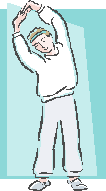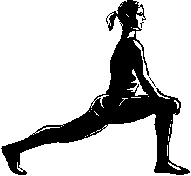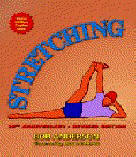Stretching for Health


Stretched out
Walking 30 minutes a day, five days a week is a simple way to take care of your
health. Stretching also provides a host of
benefits, including injury prevention, stress release,
improved mobility, enhanced athletic performance, and better posture. Try these
tips:
- Take a class. Consider taking yoga, Pilates, or tai chi classes. An instructor can model proper technique and help hold you accountable.
- Warm up. Start with 5 to 10 minutes of walking to help loosen muscles. Then focus on your hamstrings, quadriceps, shoulders, calves, and back. And don’t forget to stretch both sides evenly.
- Inhale and exhale. Breathe as you stretch, holding each position; never bounce. You should feel tension but not pain.
- Do it daily. Spend five minutes each day doing a few basic stretches (see below) — while showering, during the workday, when at your desk, before bed, or after every workout.
Add flexibility training to your cardio and strength routine to help stretch you into better health.
About Stretching
Exercises
Stretching exercises are thought to
give you more freedom of movement to do the things you need to do and the things
you like to do. Stretching exercises alone will not improve your endurance or
strength.
How Much, How
Often?
Stretch after you do your
regularly scheduled strength and endurance exercises.
If you can't do endurance or strength exercises for some reason, and stretching exercises are the only kind you are able to do, do them at least 3 times a week, for at least 20 minutes each session. Note that stretching exercises, by themselves, don't improve endurance or strength.
Do each stretching exercise 3 to 5 times at each session.
Slowly stretch into the desired position, as far as possible without pain, and hold the stretch for 10 to 30 seconds. Relax, then repeat, trying to stretch farther.
Safety
If you have had a hip replacement,
check with the doctor who did your surgery before doing lower body exercises.
If you have had a hip replacement, don't cross your legs or bend your hips past a 90-degree angle.
Always warm up before stretching exercises (do them after endurance or strength exercises, for example; or, if you are doing only stretching exercises on a particular day, do a little bit of easy walking and arm-pumping first). Stretching your muscles before they are warmed up may result in injury.
Stretching should never cause pain, especially joint pain. If it does, you are stretching too far, and you need to reduce the stretch so that it doesn't hurt.
Mild discomfort or a mild pulling sensation is normal.
Never "bounce" into a stretch; make slow, steady movements instead. Jerking into position can cause muscles to tighten, possibly resulting in injury.
Avoid "locking" your joints into place when you straighten them during stretches. Your arms and legs should be straight when you stretch them, but don't lock them in a tightly straight position. You should always have a very small amount of bending in your joints while stretching.
Progressing
You can progress in your stretching
exercises; the way to know how to limit yourself is that stretching should never
hurt. It may feel slightly uncomfortable, but not painful. Push yourself to
stretch farther, but not so far that it hurts.
About Floor
Exercises
Most of the remaining exercises are
done on the floor and stretch some very important muscle groups. If you are
afraid to lie on the floor to exercise, because you think you won't be able to
get back up, consider using the buddy system to do these. Adopt a buddy who will
be able to provide assistance if you need it.
Knowing the right way to get into a lying position on the floor and the right way to get back up also may be helpful to you. If you have had a hip replacement, check with your surgeon before using the following method. If you have osteoporosis, check with your doctor first.
To get into a lying position:
- Stand next to a very sturdy chair that won't tip over (put chair against wall for support if you need to).
- Put your hands on the seat of the chair.
- Lower yourself down on one knee.
- Bring the other knee down.
- Put your left hand on the floor and lean on it as you bring your left hip to the floor.
- Your weight is now on your left hip.
- Straighten your legs out.
- Lie on your left side.
- Roll onto your back.
Note: You don't have to use your left side. You can use your right side, if you prefer.
To get up from a lying position:
- Roll onto your left side.
- Use your right hand, placed on the floor at about the level of your ribs, to push your shoulders off the floor.
- Your weight is on your left hip.
- Roll forward, onto your knees, leaning on your hands for support.
- Lean your hands on the seat of the chair you used to lie down.
- Lift one of your knees so that one leg is bent, foot flat on the floor.
Leaning your hands
on the seat of the chair for support, rise from this position.
Note: You don't have to use your left side; you can reverse positions, if you
prefer.
 Taken from Exercise A Guide to Aging
Taken from Exercise A Guide to Aging
Chapter 4: Stretching Exercises
Stretching Exercises
Triceps Stretch (animated)
Double Hip Rotation (animated)
Check out too: What is Yoga and How Can It Help Me?
Muscle and Stretching sites
Muscle Atlas
An atlas of the muscles from the University of Washington
www.rad.washington.edu/atlas/
Exercise and Muscle Directory
This is a great tool for helping to learn muscles and their actions
http://www.exrx.net/Lists/Directory.html
New Muscle Stretches
Easy to do stretches for the major muscle groups
http://www.drbackman.com/new-muscle-stretches.htm
|
|
